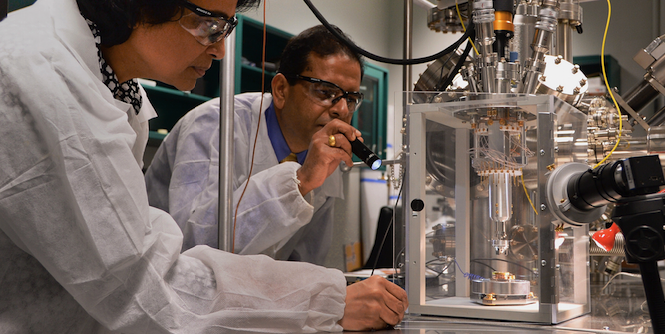Where Science and International Affairs Collide

While its Asian neighbours are undergoing a period of innovation and heavy investment in science, Australia is failing to embrace these opportunities. Australia is well-placed to become a global leader in research and development if it focuses on the international possibilities.
Last September scientists from the Eijkman Institute for Molecular Biology in Jakarta identified the first case of the Zika virus in Indonesia. The researchers in question were former colleagues of mine and they discovered Zika in blood samples that I’ve probably handled. The findings were publicised just this month, sparking media headlines around Australia in the realisation that this debilitating virus is much closer to home than initially thought. For me however, it struck a different chord. The Australian government currently has no collaborations or funding arrangements with Eijkman’s Emerging Virus Research Unit, and therefore has no direct access to data that could help implement life-saving disease surveillance programs months in advance. Ironically, the Zika virus was detected in Australia just three days later.
Although an isolated incident, the Zika case emphasises that an international focus on scientific research is central to Australia’s interests. Since 2011, the number of international collaborations from research funded by the Australian Research Council (ARC) – Australia’s premier research funder – has dropped from 7383 to 6337. Moreover, the vast majority of collaborators are based in US and Europe, with relatively few from developing countries. Now, with Malcolm Turnbull’s recent launch of the National Science and Innovation Agenda, the time is ripe for change.
Australia’s major partner economies in Asia are currently undergoing a science and innovation boom, while global R&D investment has nearly doubled since 2000. Singapore, India, South Korea and Malaysia are all showing stronger R&D growth than Europe and North America, yet the latter still represent Australia’s largest research partners. With more funding than ever before, 2016 presents an incredible opportunity to build Australia’s high-quality research through connecting to emerging powers in Asia and beyond.
These global networks go further than patents and publications. The Australian Academy of Science’s 2010 position paper, Internationalisation of Australian Science, showed that funding strategic overseas collaboration provided a rate of return between six and seven to one. This rate increased to 21 when more long-term commercial outcomes and the attraction of international funding were taken into account. International collaborations maximise economic and social benefits to Australia at rates that domestically isolated research largely cannot.
Research is just one facet of innovation, however. One of the most promising outcomes of the National Science and Innovation Agenda is a fresh focus on start-ups and the links between research and business. Previously, Australia’s start-up ecosystem was starved of incubation and funding opportunities, seeing more than 4500 budding start-ups miss out on equity financing every year. For me, founding a start-up in Australia wasn’t even an option. The lure of abundant resources and a tech-oriented culture shifted my entrepreneurial ambitions to Singapore and Indonesia.
Nevertheless from 2016 onwards, change is inevitable. Funding for start-ups will increase, research will become more translational and industry will benefit from scientific discoveries. Once again however, benefits will only be maximised if Australia looks north. Inward foreign investment, much like outward funding for research, multiplies economic and social returns. Overseas networks provide better opportunities for Australian start-ups to learn, scale and succeed. Most importantly, they accelerate solutions to the world’s biggest issues. Australia should therefore take all possible measures to attract international players to its technology sector.
Fortunately, these measures are already falling into place. Foreign investors are promised tax incentives from July onwards under the National Science and Innovation Agenda, while the National Health and Medical Research Council’s Corporate Plan 2015-2016 endeavours to support collaborative approaches to international research. That said, more strategic funding should be directed towards building scientific partnerships with developing economies, international capacity building, accessing global networks and attracting foreign talent. By way of example, Australia could offer entrepreneur visas for foreigners with innovative business proposals, a model that has worked effectively in Singapore. Australia should also support the mobilisation of its own talent to digital valleys overseas to learn from the world’s best and brightest.
Research funding bodies should consider international partnerships as an important criterion for grant-making decisions, while researchers themselves should capitalise on the increased resources and expertise that such relationships provide. The potential of such partnerships is where science and international affairs collide. If Australia truly wants to be considered a “science nation”, every effort must be made to support international science and develop collaborative strategies to address the world’s biggest issues.
Anton Lucanus is a recipient of the AIIA’s Euan Crone Asian Awareness Scholarship currently undertaking Honours research at the Yong Loo Lin School of Medicine at the National University of Singapore. He has a passion for tech entrepreneurship and has previously co-founded three startups: Neliti.com, MTAM and Rukamen.com. This article may be republished under a Creative Commons Licence.





